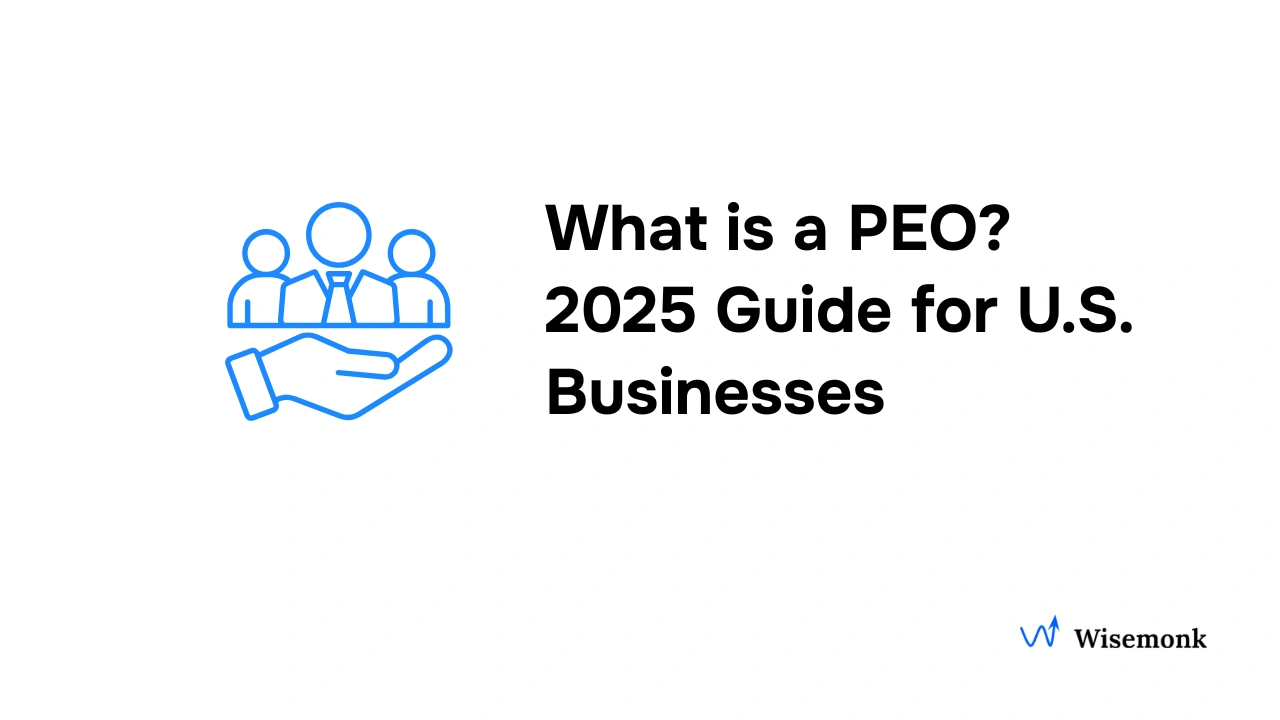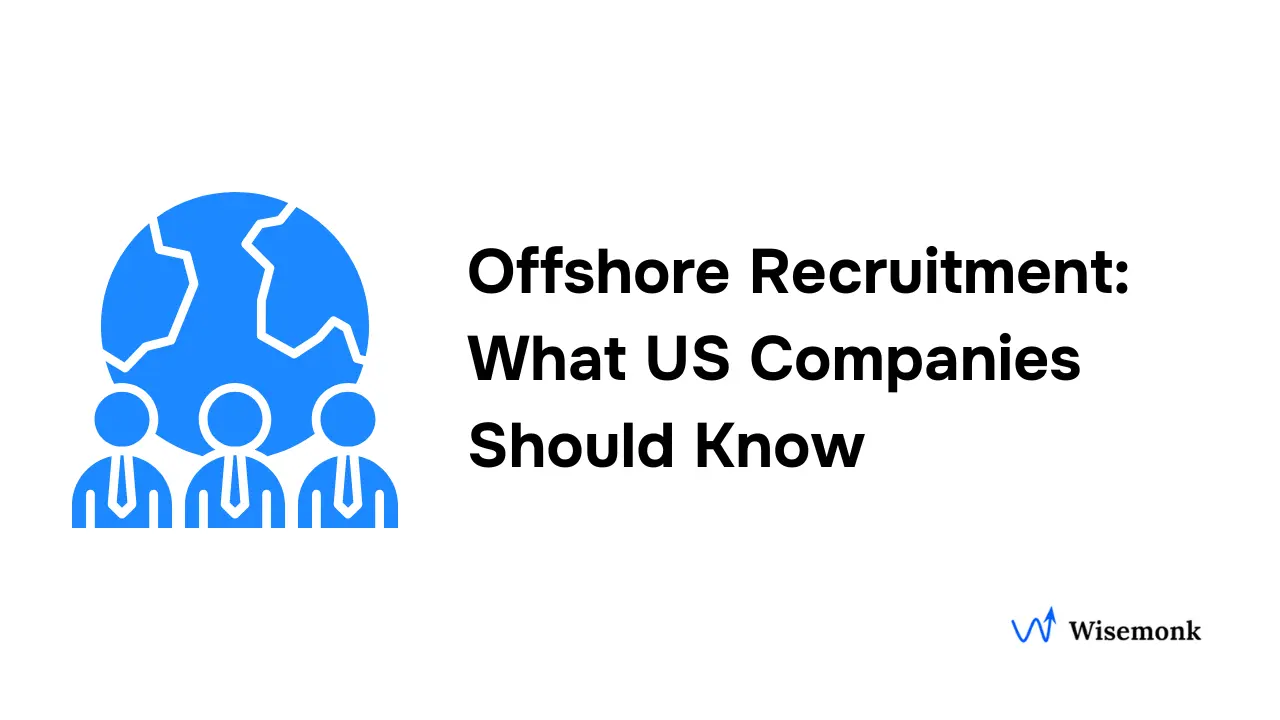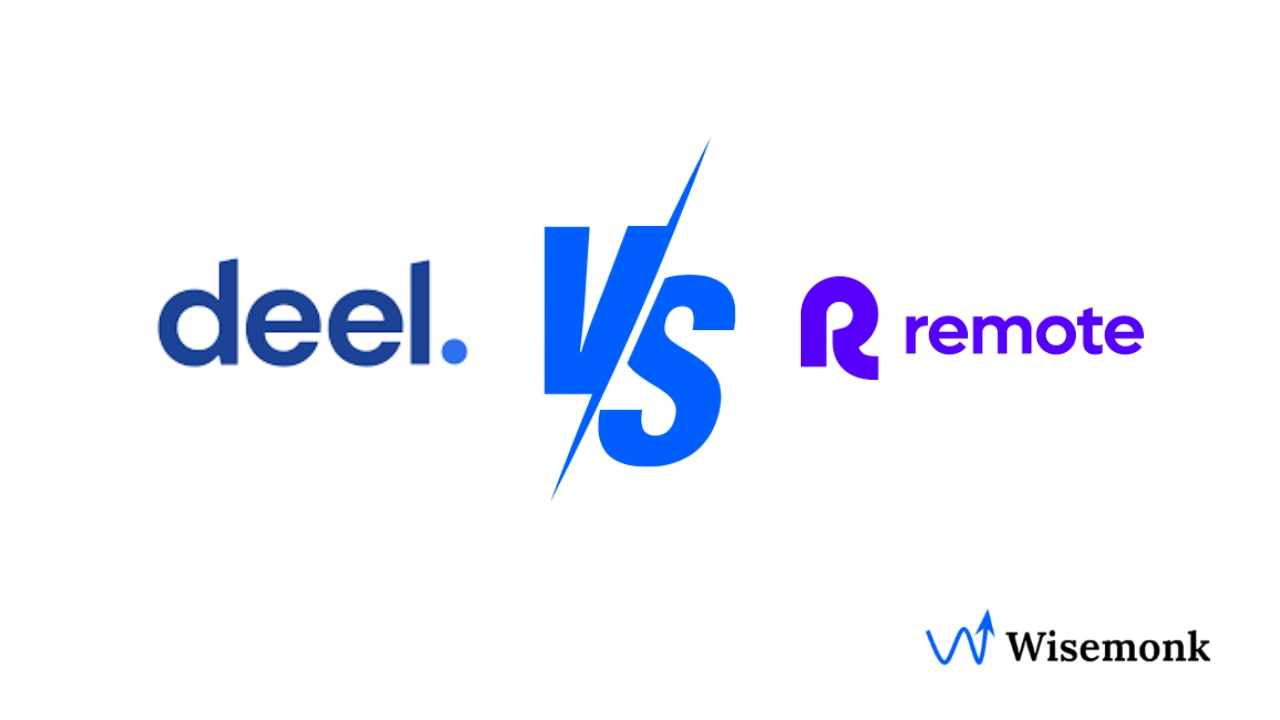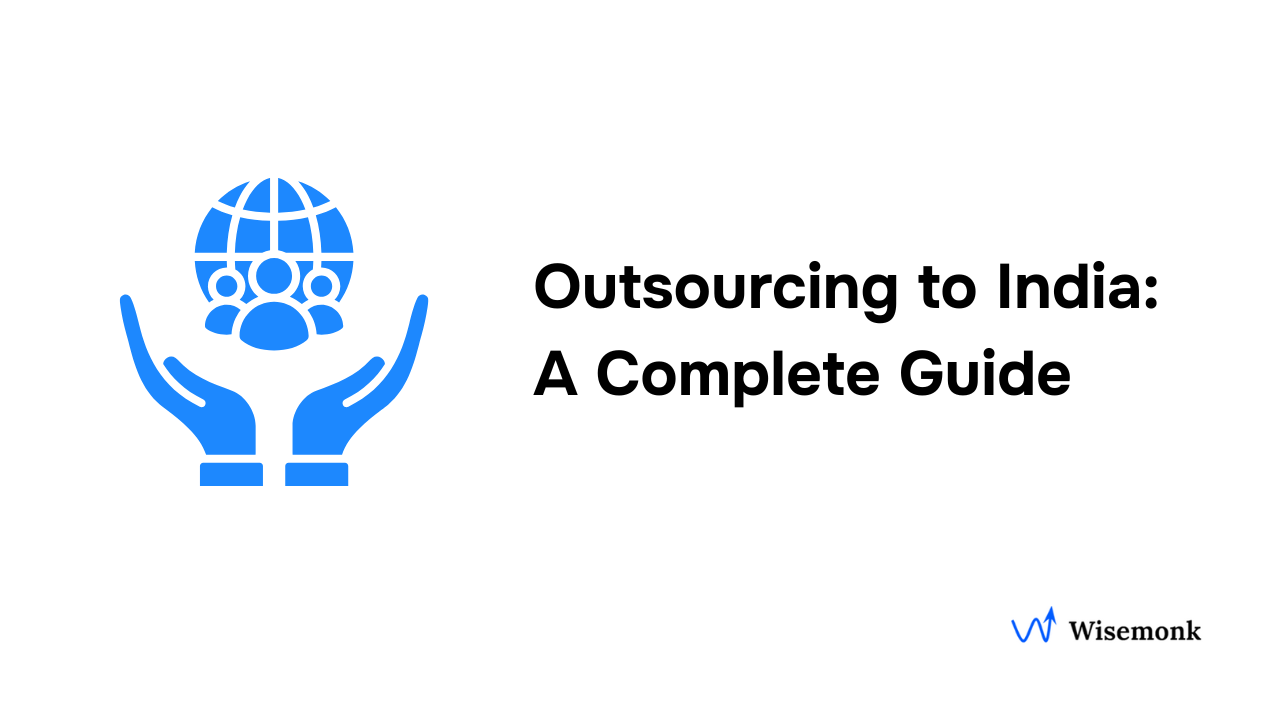What is a professional employer organization (PEO) and why are so many businesses turning to it? Managing HR, payroll, taxes, and compliance is a constant challenge for U.S. small and mid-sized companies, especially when competing for talent and trying to stay compliant. A PEO creates a co-employment relationship where it handles payroll processing, tax compliance, and benefits administration, letting the client company focus on core business operations.
With the PEO industry valued at nearly $200 billion globally, it’s clear these services are reshaping how businesses scale.
In this guide, we’ll explain what a PEO is, how it works, the benefits and risks, how much a PEO costs, and how to choose the right provider for your business.
What is a PEO?[toc=What is a PEO]
A professional employer organization (PEO) is a firm that enters into a co-employment relationship with a business, managing critical HR functions like payroll processing, tax compliance, employee benefits administration, and risk management. The client company (the “worksite employer”) keeps control of day-to-day operations, while the PEO takes on administrative and compliance responsibilities.
Choose a PEO if:
- You want relief from payroll taxes, filings, and HR tasks.
- You need access to better health benefits, retirement plans, and workers’ compensation insurance at lower cost.
- You’re concerned about regulatory compliance and want compliance support across multiple states.
- You’re a small or mid-sized business looking to scale without hiring a large internal HR team.
- You prefer working with an accredited provider (Certified Professional Employer Organization (CPEO) by the IRS or Employer Services Assurance Corporation (ESAC) certified).
How does a PEO Work?[toc=How PEO Works]
A Professional Employer Organization (PEO) operates through a co-employment relationship where both the PEO and the client company share employer responsibilities. The client remains in control of business decisions, while the PEO takes care of the heavy lifting in HR, compliance, and payroll.
Here’s how a PEO works:
- Shared responsibilities: The client manages business strategy, the PEO manages HR functions.
- Payroll & taxes: Handles payroll processing, filings, and pay stubs while ensuring tax compliance.
- Benefits administration: Provides access to health insurance, retirement plans, and multiple employer welfare arrangements (MEWAs) at better rates.
- Workers’ comp & risk: Manages workers’ compensation insurance, claims, and risk mitigation.
- HR processes: Supports onboarding, employee policies, and exit procedures.
- Compliance support: Monitors federal, state, and local regulations for legal purposes.
- Technology: Offers HR dashboards and reporting tools for smooth HR processes.
What are the key benefits of using a PEO?[toc=Key Benefits]
Working with a professional employer organization can reshape how businesses manage people, compliance, and costs. In our experience helping companies expand globally, companies that partner with a PEO gain both immediate relief from HR tasks and long-term stability in managing their workforce.
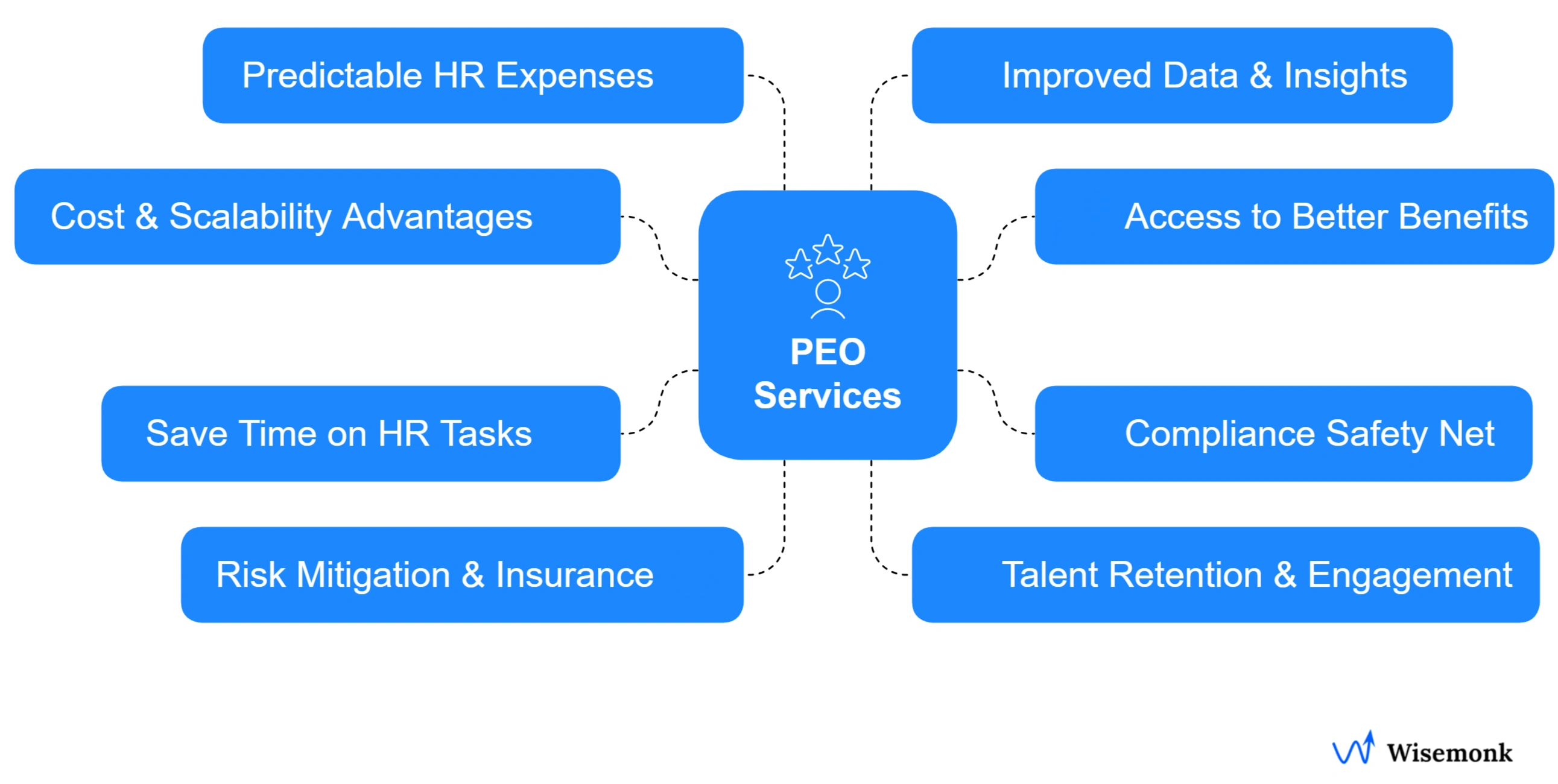
Key benefits of PEO services include:
- Cost & scalability advantages: Spread HR costs across a larger employee base, allowing small businesses to access enterprise-level services at a lower cost.
- Access to better benefits: Get competitive health insurance, retirement plans, and employee benefits through economies of scale.
- Compliance safety net: Reduce risk with ongoing compliance support for payroll taxes, labor laws, and state-specific regulations.
- Save time on HR tasks: Free your internal team from payroll processing, benefits administration, and routine HR functions.
- Risk mitigation & insurance: Ensure proper coverage with workers’ compensation insurance and liability protections.
- Talent retention & engagement: Offer attractive benefits and HR support that reduce employee turnover.
- Predictable HR expenses: Manage a clear service fee model that simplifies financial planning.
- Improved data & insights: Access reporting and benchmarking to guide workforce decisions.
What type of businesses benefit from using a Professional Employer Organization?[toc=Businesses That Benefit Most]
Not every company needs a PEO, but certain businesses see outsized value from this model. Based on our research, these are the client profiles that benefit most.
A PEO is a strong fit for:
- Startups & high-growth companies: Scale quickly without building an in-house HR team.
- Small and mid-sized businesses: Gain access to affordable employee benefits and compliance support usually reserved for larger firms.
- Multi-state employers: Simplify payroll taxes, HR compliance, and workers’ compensation insurance across different jurisdictions.
- Seasonal or gig-heavy businesses: Adjust HR services to match fluctuating headcounts.
- Multinationals entering the U.S.: Use PEO services to handle local employment regulations, benefits, and payroll while focusing on market entry.
How does a PEO compare to other alternatives?[toc=PEO vs. Alternatives]
When exploring HR outsourcing, businesses often confuse PEOs with other models like HROs, staffing agencies, or global EOR services. Each serves a different purpose.
Here’s how they stack up side by side:
PEO vs. HR Outsourcing (HRO)
PEO vs. Staffing / Temporary Leases
PEO vs. Employer of Record (EOR)
Read more: PEO vs EOR: What's the Best Choice for Your Business
PEO and EOR Hybrid Models
Some providers now combine PEO services with EOR capabilities, letting businesses manage domestic employees under co-employment while hiring globally without setting up entities. This is where companies like Wisemonk stand out.
What are the drawbacks, tradeoffs, & risks while using PEO services?[toc=Drawbacks]
A Professional Employer Organization can be a game-changer, but it’s not without tradeoffs. In our experience as a leading Employer of Record , businesses should weigh these risks before signing a service agreement.
Key drawbacks include:
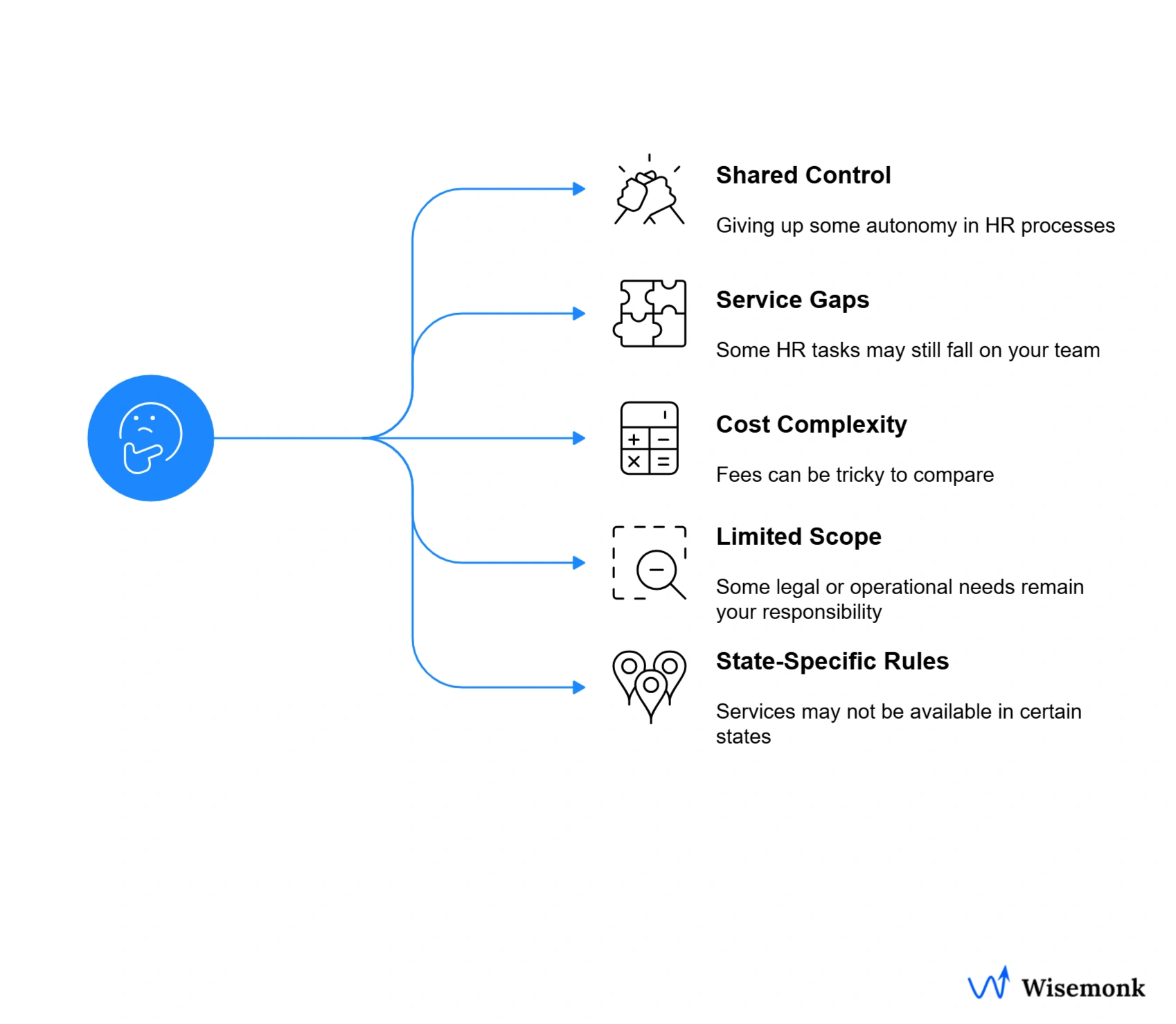
- Shared control: You give up some autonomy since HR processes are co-managed in a co-employment relationship.
- Service gaps: Not every PEO handles all HR functions, so some tasks may still fall on your team.
- Cost complexity: Fees can be based on total payroll, flat fees, or percentages, making it tricky to compare.
- Limited scope: PEOs don’t cover everything, some legal or operational needs remain your responsibility.
- State-specific rules: Some services may not be available in certain states, creating compliance blind spots.
While PEOs can solve major HR pain points, it’s important to weigh them against other options. Next, let’s see how PEOs stack up against alternatives like HR outsourcing, staffing firms, and global EORs.
How to choose a PEO?[toc=How to Choose]
Picking the right professional employer organization isn’t just about who offers the lowest fee. It’s about finding a partner who understands your business, supports your employees, and keeps you compliant without surprises.
Here’s a step-by-step way to get it right:
1. Assess your business needs
Start by listing what you actually need help with, whether that’s better benefits, payroll processing, compliance expertise, or risk management. Don’t forget to consider your employees’ expectations too. If they want stronger health benefits or easier self-service tools, make sure your PEO can deliver.
2. Research PEO providers
Look into the provider’s financial stability, longevity and a strong balance sheet are signs they’ll stick around. Check for IRS Certified Professional Employer Organization (CPEO) status and ESAC accreditation, which prove they meet high compliance and financial standards. Also, see if they have experience in your industry, because each sector comes with its own quirks.
3. Evaluate services and technology
A good PEO should cover the full range: HR services, benefits administration, workers’ comp, and compliance with federal and state laws. Ask to see their HR technology in action, it should be simple, integrate with your systems, and allow managers and employees to do basic tasks themselves. Don’t skip checking on support either; you’ll want quick access to real HR specialists when issues come up.
4. Review costs and contracts
Transparency is key. Understand exactly how they charge, whether it’s a flat fee, percentage of payroll, or a mix, and look out for hidden costs tied to benefits or insurance. Always read the service agreement carefully so you know where the responsibilities and liabilities fall.
5. Get client references
Finally, talk to other businesses like yours that already use the PEO. Real-world feedback on service quality, responsiveness, and reliability is often more telling than a polished sales pitch.
By walking through these steps and comparing more than one provider, you’ll find a PEO that fits both your business goals and your employees’ needs.
Read more: Choosing a PEO: Does Your Business Need One?
How much does a PEO cost?[toc=Cost of PEO]
PEO pricing isn’t one-size-fits-all. Costs depend on your headcount, payroll size, and the services bundled into the agreement. In our experience helping businesses expand globally, U.S. businesses typically see admin fees ranging from 2% to 12% of total payroll or $900–$1,500 per employee per year.
Common PEO Pricing Frameworks:
- Percentage of payroll: A fee based on gross payroll (usually 2–6%). Works well for larger companies but can get expensive with high salaries.
- Flat per-employee fee (PEPM): A fixed monthly cost per employee (e.g., $100–$150). Easier to predict and preferred by many small businesses.
- Blended/hybrid model: Mix of payroll percentage and flat fees, depending on services chosen.
Hidden or Pass-Through Costs:
- Benefits administration: Premiums for health insurance and retirement plans are billed separately.
- Workers’ compensation insurance: Often charged as a pass-through based on your risk class.
- Compliance or setup fees: Some PEOs include extra charges for onboarding or year-end filings.
Incentive or Risk-Sharing Models:
Certain accredited PEOs tie pricing to risk-sharing, like performance guarantees in workers’ comp or claims management.
Always ask for a detailed service fee breakdown. A good PEO will clearly separate admin costs, pass-throughs, and insurance premiums so you’re not caught off guard.
Read more: How much does a PEO Cost? A Complete Guide for 2025
Why choose Wisemonk PEO Services?[toc=Why Choose Wisemonk]
Most global PEOs treat India as just another payroll and compliance box to tick. From our experience in handling payroll and helping business leaders hire across borders, we know that building a global team requires more than that.
Wisemonk is a leading Employer of Record (EOR) in India, combining local expertise with comprehensive end-to-end support to ensure that your hires not only join your company but also thrive from day one.
Here’s how we help businesses expand globally:
- We help you source top Indian talent and onboard them seamlessly.
- We run accurate payroll, manage taxes, and ensure full compliance with Indian employment laws.
- We provide access to competitive health insurance, retirement plans, and employee benefits.
- We navigate India’s complex labor codes and tax regulations so you stay compliant without headaches.
Wisemonk takes care of the local complexity so you can focus on building your global business.
Ready to simplify hiring? Book a free consultation call with Wisemonk to find the best approach for scaling your team efficiently, affordably, and with full compliance.
